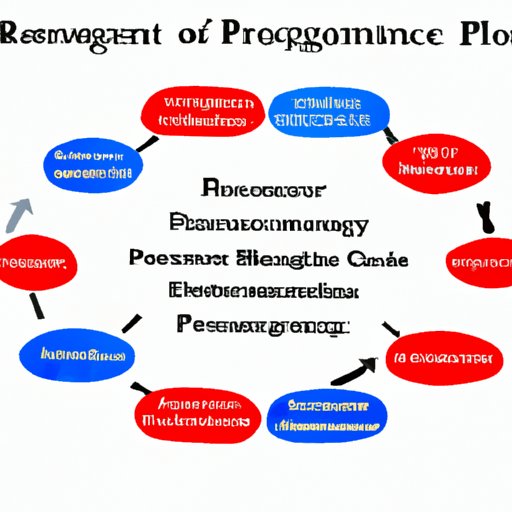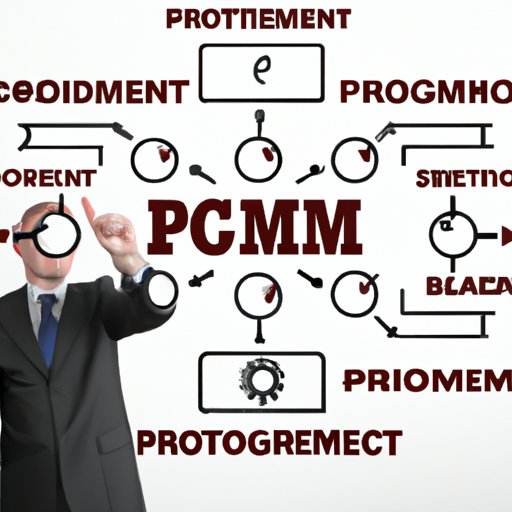Introduction
Business Process Management (BPM) is a holistic approach to improving organizational performance by analyzing and managing the organization’s business processes. By leveraging BPM strategies, organizations can streamline operations, reduce costs, improve customer satisfaction, and enhance decision making. In this article, we will explore what BPM is, how it can be used to improve organizational efficiency and effectiveness, and the benefits of implementing a BPM system.
What is Business Process Management?
Business Process Management is an approach used to analyze, design, execute, monitor, and optimize business processes. A business process is a sequence of activities that creates value for an organization. These processes may include activities such as customer service, order fulfillment, product manufacturing, or financial reporting. The goal of BPM is to identify and improve existing processes in order to make them more efficient and effective.
Processes can be categorized into three types: manual processes, semi-automated processes, and automated processes. Manual processes are completed by people with limited or no technology assistance. Semi-automated processes use technology to automate some parts of the process, but require human input for other parts. Automated processes are completely automated, requiring no human input. Process automation is a key component of BPM and can be used to increase efficiency and reduce costs.

Leveraging BPM for Improved Efficiency and Effectiveness
Organizations can leverage BPM to improve efficiency and effectiveness. The first step is to analyze existing processes to identify areas of improvement. This involves mapping out each process step and identifying any bottlenecks or redundancies. Once these areas have been identified, organizations can implement process management strategies such as process modeling, process reengineering, process automation, and process improvement.
Overview of Business Process Management Strategies
Process modeling is the practice of creating a visual representation of processes in order to identify areas of improvement. Process reengineering is the practice of redesigning existing processes to improve efficiency and effectiveness. Process automation is the use of technology to automate manual processes. And process improvement is the practice of continuously refining processes to make them more efficient and effective.

The Advantages of Automating Business Processes
Automating business processes offers numerous advantages. Automation can increase productivity by freeing up employees to focus on more strategic tasks. Automation can also reduce operational costs by eliminating the need for manual labor. Finally, automation can improve accuracy and quality by removing the possibility of human error.
According to a study conducted by Forrester Consulting, “process automation can reduce costs by up to 50 percent and eliminate up to 80 percent of manual processes.”1 This demonstrates the potential cost savings that can be achieved by automating processes.
Implementing a Business Process Management System
Implementing a BPM system requires careful planning and consideration. Organizations must assess their business needs and select the right technology to meet those needs. They must also develop process documentation and train employees on the new system. Additionally, organizations must ensure that the system is integrated with other systems and processes to maximize efficiency.

Understanding the Role of Business Process Management in Organizational Performance
BPM can have a significant impact on organizational performance. By streamlining operations, organizations can improve customer satisfaction and reduce operational costs. Additionally, BPM can enhance decision making by providing data-driven insights into processes. Finally, BPM can help organizations become more agile and better equipped to respond to changing market conditions.
Conclusion
Business Process Management is an approach to improving organizational performance through the analysis and management of business processes. By leveraging BPM strategies, organizations can streamline operations, reduce costs, improve customer satisfaction, and enhance decision making. Automating processes can further improve efficiency and reduce costs. Implementing a BPM system requires careful planning and consideration. Ultimately, BPM can have a significant impact on organizational performance and should be part of any organization’s strategy for success.
(Note: Is this article not meeting your expectations? Do you have knowledge or insights to share? Unlock new opportunities and expand your reach by joining our authors team. Click Registration to join us and share your expertise with our readers.)
